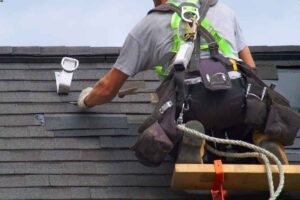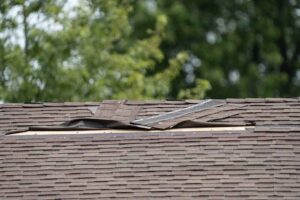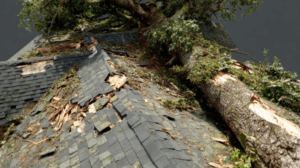It starts with a thin sheet of frost. Maybe some icy glitter across the shingles that looks downright picturesque in the morning sun. You sip your coffee, glance out the window, and think—“Looks fine to me.” But here’s the thing about winter in the Sandhills: it’s sneaky.
The region’s mild winters lull homeowners into a false sense of security. We don’t often get heavy snowdrifts like the mountains do, but frost, freezing rain, and the occasional ice storm are enough to wear down a roof faster than you think. Water expands when it freezes, seeps into nail holes and seams, and then melts again. That constant cycle puts pressure on even the best-built roofing systems—and you might not notice the damage until spring rain starts dripping through your ceiling.
A proper roof inspection after winter weather isn’t about panic—it’s about prevention. If you’re a homeowner in the Sandhills, knowing what to look for and when to call in the pros can save you thousands in repairs (and a few sleepless nights, too).
Why Roof Inspections Are a Must After Ice, Frost, and Winter Storms
Every winter storm tells a story. For your roof, it’s usually a story of stress. Ice dams form along the eaves, gutters clog with frozen debris, and shingles stiffen until they crack. Then, when the thaw comes, all that melting water looks for the path of least resistance—and if your roof’s defenses are weak, that path leads straight inside.
In North Carolina’s Sandhills region, winter weather tends to bounce between warm and cold days. That freeze-thaw pattern is brutal for roofing materials. Tiny cracks form, water sneaks in, and before you know it, you’re dealing with hidden leaks, mold growth, or sagging insulation.
A professional inspection after these storms helps uncover problems you can’t see from the ground—like loose flashing, compromised sealant, or soft decking. More importantly, it helps you catch damage while it’s small enough to fix affordably. Waiting until spring means those issues have weeks (or months) to worsen under fluctuating temperatures and spring rain.
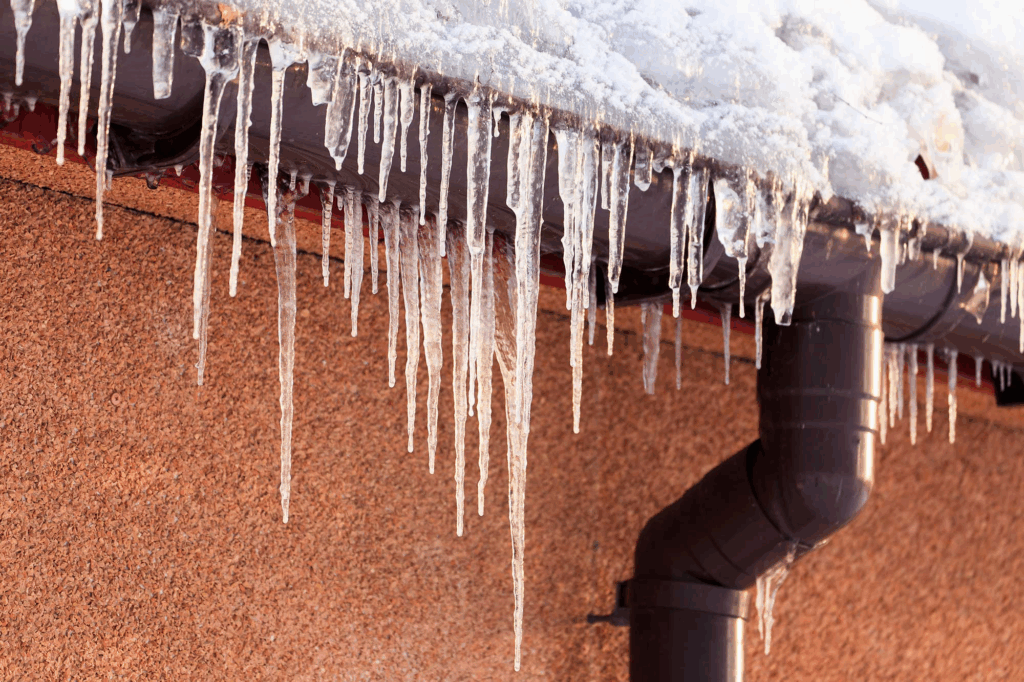
The Hidden Signs of Winter Roof Damage
You don’t need to be a roofer to spot the warning signs. While a professional inspection is best, there are a few early clues every homeowner should watch for after a cold snap:
- Water stains or discoloration on ceilings or walls—often the first visible sign of a leak.
- Icicles or uneven snow melt along the roof edge, which can indicate poor ventilation or an ice dam.
- Gutters sagging or pulling away from the house after heavy ice buildup.
- Granules in your gutters or at the downspout—tiny bits of shingle coating that signal wear.
- Drafts or cold spots in the attic, suggesting insulation or venting issues caused by trapped moisture.
- Dark streaks or moss patches forming near roof valleys, a sign of trapped water or poor drainage.
If any of these sound familiar, it’s time to make that call. These may look small, but they can be symptoms of much bigger problems brewing overhead.
What a Post-Winter Roof Inspection Should Include
When you hire a professional roofer for a winter inspection, make sure they cover the essentials. A detailed evaluation should include:
- Full shingle check: Cracked, curled, or missing shingles are red flags. Winter stress can cause adhesive failure, leaving areas vulnerable to leaks.
- Flashing inspection: Flashing around chimneys, skylights, and vents can pull away during freeze-thaw cycles.
- Gutter and drainage system review: Ice and debris buildup can bend gutters or block downspouts. Proper drainage prevents rot and fascia damage.
- Attic inspection: Moisture inside the attic often reveals roof leaks long before they’re visible indoors. A good roofer checks insulation, rafters, and ventilation.
- Roof valleys and low spots: These areas collect water and ice—prime locations for leaks.
- Structural integrity check: In rare cases, heavy ice or snow accumulation can compromise roof framing or decking.
A professional will document everything with photos, provide repair recommendations, and even help you plan preventive maintenance before the next season rolls around.
Pain Points Homeowners Face (and How to Tackle Them)
Let’s be honest—most homeowners don’t climb on their roofs, and they shouldn’t have to. But that distance from the problem also creates a false sense of security. Here are a few common pain points you might relate to:
- “My roof looks fine from the ground.”
That’s the trap. Most serious roof issues start beneath the surface. You can’t see cracked underlayment, loosened flashing, or small leaks that begin in hidden corners. - “I’ll wait until spring to check it.”
By spring, meltwater and temperature swings may have already done the real damage. Early inspection prevents costly water intrusion during spring rains. - “I’m worried about the cost.”
A roof inspection is far cheaper than a full repair or replacement. Many reputable contractors in North Carolina offer affordable or even complimentary inspections—especially after storms. - “I’m not sure who to trust.”
Look local. Companies like Red Wolf Roofing are rooted in the community and know the quirks of Sandhills weather better than out-of-town storm chasers. Ask for credentials, reviews, and references.
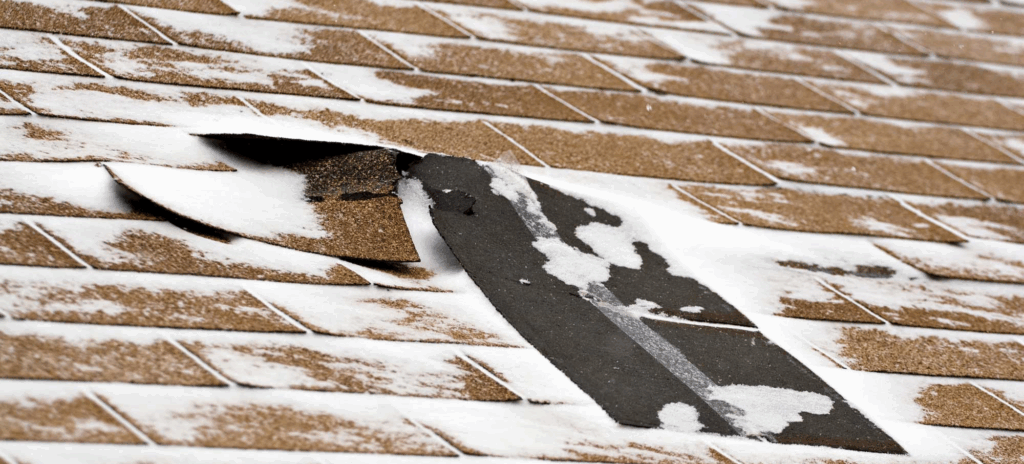
Preventive Steps You Can Take Between Inspections
You can’t control the weather, but you can give your roof a fighting chance. Here’s what you can do to help your home weather the next cold front:
- Keep gutters clean and clear. Clogged gutters trap ice and water, which can creep under shingles.
- Trim overhanging branches. Falling limbs or constant shade can worsen frost buildup.
- Check attic insulation and ventilation. Proper airflow helps prevent ice dams by keeping the roof’s surface temperature consistent.
- Watch for icicles. They may look pretty, but they often indicate blocked drainage.
- Schedule a professional inspection twice a year—once after winter, and once before hurricane season begins.
By combining preventive care with professional oversight, you can extend your roof’s lifespan and keep small problems from becoming big ones.
Choosing the Right Roofing Partner
After the cold sets in, not all roofing companies are created equal. A trustworthy roofing contractor doesn’t just look for damage—they educate you about your home. They explain what’s urgent, what can wait, and how to prevent future issues.
At Red Wolf Roofing, for example, the focus is on honesty and craftsmanship. They understand that homeowners in the Sandhills aren’t just looking for a quick patch job—they want peace of mind. A proper inspection means getting the facts straight, documenting findings with photos, and helping you plan the next step, whether that’s a small repair or a simple maintenance schedule.
When your roofer knows local conditions—the mix of humidity, temperature swings, and sandy soils common to North Carolina’s inland climate—they can tailor their approach for longer-lasting results. That local experience matters.
The Cost of Ignoring Winter Roof Damage
It’s easy to push roof maintenance to the bottom of your to-do list. But the cost of doing nothing? That’s where homeowners get hit hardest.
A small, unnoticed leak can lead to:
- Mold and mildew spreading into insulation and drywall.
- Water damage to ceilings and light fixtures.
- Rotting roof decking that weakens structure.
- Higher energy bills due to compromised insulation.
In short, that little patch of frost might cost you more than a few bucks if ignored. A 60-minute inspection could save you thousands later—and that’s not exaggeration.
Protect Your Home Before Spring Thaw
When the Sandhills thaw out after a cold snap, your roof deserves a once-over. Don’t wait for a leak to tell you something’s wrong. A proactive roof inspection after ice, frost, or winter storms keeps your home safe, efficient, and ready for whatever North Carolina weather throws next.
If you’re not sure where to start, reach out to Red Wolf Roofing. Their team combines hands-on experience, local knowledge, and genuine care for the people they serve. They’ll inspect your roof thoroughly, explain the results clearly, and give you a plan that makes sense for your home and your budget.
Give Red Wolf Roofing a call today to schedule your post-winter roof inspection in the Sandhills. Because when your roof is strong, your home—and everything under it—stays protected.

